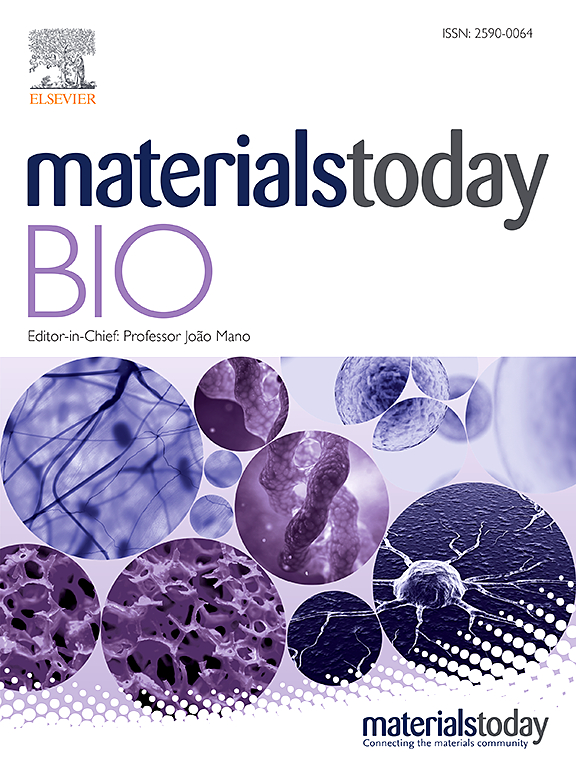Assessing the feasibility of CRISPRa approaches to enhance protein-based biomaterial expression in bacterial systems for more efficient production
IF 8.7
1区 医学
Q1 ENGINEERING, BIOMEDICAL
引用次数: 0
Abstract
Recombinant protein production is crucial for biomedical and industrial applications; however, achieving high yields for complex protein-like biomaterials such as elastin-like recombinamers (ELRs) remains challenging. ELRs, protein-based polymers derived from tropoelastin, emulate the mechanical and bioactive properties of natural tissues, making them valuable for numerous uses. Despite their promise, implementing a sophisticated molecular system for ELR production in Escherichia coli involves overcoming multiple hurdles, including metabolic bottlenecks and low yields. In this study, we employed a CRISPR activation (CRISPRa) system to enhance ELR expression in E. coli. Although further optimization is required to reach industrial-scale outputs, our findings establish a proof of concept for taking advantage of CRISPRa to boost recombinamers yields. Such improvements represent a crucial step toward scalable production, facilitating the commercial adoption of ELRs and, in general, recombinamers not only in biomedical applications but also in broader industries that stand to benefit from these versatile biomaterials.

求助全文
约1分钟内获得全文
求助全文
来源期刊

Materials Today Bio
Multiple-
CiteScore
8.30
自引率
4.90%
发文量
303
审稿时长
30 days
期刊介绍:
Materials Today Bio is a multidisciplinary journal that specializes in the intersection between biology and materials science, chemistry, physics, engineering, and medicine. It covers various aspects such as the design and assembly of new structures, their interaction with biological systems, functionalization, bioimaging, therapies, and diagnostics in healthcare. The journal aims to showcase the most significant advancements and discoveries in this field. As part of the Materials Today family, Materials Today Bio provides rigorous peer review, quick decision-making, and high visibility for authors. It is indexed in Scopus, PubMed Central, Emerging Sources, Citation Index (ESCI), and Directory of Open Access Journals (DOAJ).
 求助内容:
求助内容: 应助结果提醒方式:
应助结果提醒方式:


